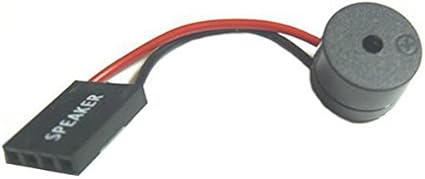I have an ASRock G31M-S (SEE ALL SPECIFICATIONS HERE), and I just found an internal two_pin (1.5W) speaker lying around the house. I tried to connect it to my MOBO but the only connecter pins I found related to audio outputs are, a 4 pin(marked as SPEAKER1), and a 9 pin(marked as HD_AUDIO1).
You will find all related images HERE.
The speaker is same as THIS ONE being sold online.
I'm not very experienced with these things, please help.

You will find all related images HERE.
The speaker is same as THIS ONE being sold online.
I'm not very experienced with these things, please help.


